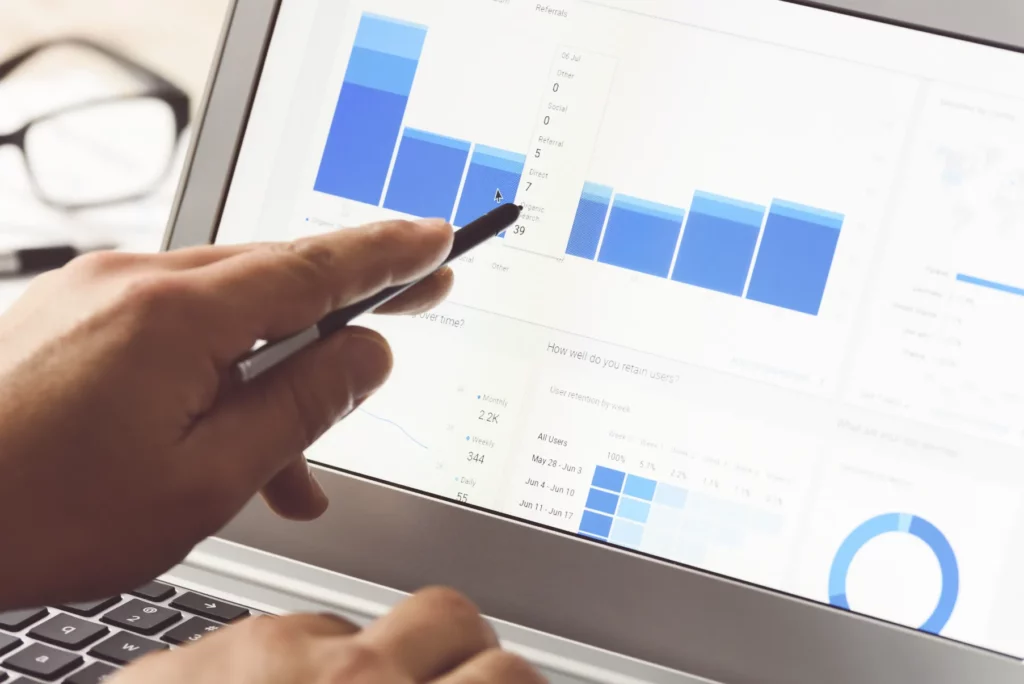6 min read
Table of contents
Module III - Control & Communication Management
- 1. The role of data analytics in facility management and maintenance operations
- 2. How to set an integrated maintenance system
- 3. Communication in Facility Management & Maintenance
- 4. Client Management in FM: How to Promote Transparency
- 5. How to succeed at team management
- 6. How to track technician performance
Table of contents
Module III - Control & Communication Management
- 1. The role of data analytics in facility management and maintenance operations
- 2. How to set an integrated maintenance system
- 3. Communication in Facility Management & Maintenance
- 4. Client Management in FM: How to Promote Transparency
- 5. How to succeed at team management
- 6. How to track technician performance
Client Management in FM: How to Promote Transparency and collaboration
Who do you trust? It might seem like the question is coming out of the blue, but think about it for a second. Imagine you’re setting up a savings account. Would you do it blindly with your local bank, without even checking interest rates? Of course not.
Now, the same happens with your clients. If they’re investing in your facility management services, they deserve to know what they’re getting, and how they’re getting it. Join us for a ride on how to promote transparency and improve client management in FM.


The era of sustainability: understand your clients’ point of view
Companies are increasingly held accountable for their ecological footprint and fair trade policies. Not only by legislature but, above all, by their customers. A 2017 study by Unilever found that 33% of customers prefer brands they perceive as socially and environmentally “good”. About 53% of customers in the UK feel better when they buy sustainably produced goods.
Employees, too, prefer to work for sustainable companies. Research shows that about 75% of workers at small and medium enterprises want to work for green companies. Another study by UCLA found that employees are 16% more productive in companies that implement green practices. Companies that do not take sustainability seriously risk becoming islands in the short-term, not unlike rubbish patches in the Pacific Ocean.
But what does “sustainable” mean? It’s not just about “buying local” or “bio” or “organic”. The whole supply chain is at stake. That’s why we see bananas certified by the Rainforest Alliance, wood from sustainable forests, tea and cocoa from fairtrade-certified producers, couriers advertising their near-zero carbon footprint, and renewed customer scrutiny regarding workers’ rights in factories.
The Fashion Revolution, the publisher of the annual Fashion Transparency Index, launched the viral campaign “who made my clothes?” to raise awareness of this issue. Customers are starting to wonder where everyday items come from, who made them, how they wound up on UK shelves, and if labourers had fair work conditions. They’re starting to demand answers.
For their part, The United Nations summed up all of these concerns in their list of 17 sustainable development goals for 2030, to which Facility Management is no stranger. FM can have a positive impact in providing clean water, clean energy, improving infrastructure, responsible resource consumption, and adequate workspaces. But the question is, can FM be transparent about its role?
Why is transparency important for businesses?
Since many companies want to pander to customers looking for greener products, some products are not as sustainable as they claim – a practice known as “greenwashing”. To become more trust-worthy, many companies are going the extra mile to follow international standards, such as ISO14000 or ISO50001.
The ISO14000 family sets out the requirements for environmental management systems that any business can put in place. It focuses on the efficient use of resources, measuring environmental impact, and improving it. ISO 14001:2015 even includes a smart checklist for small businesses.
Facility Management goes beyond compliance with these benchmarks. Ultimately, FM always pushes towards the company’s wider goals, which makes it decisive for corporate social responsibility in areas such as sustainability and energy efficiency. FM finds its way to recycling, carbon neutrality, renewable energy, waste management, water and energy consumption. Plus, it is the backbone of green buildings.
For businesses, taking a clear stance on these issues has several advantages:
- increases commitment;
- shows compliance with current requirements and legal standards;
- improves confidence and trust amongst stakeholders;
- attracts customers that are more environmentally aware;
- decreases costs because it eliminates inefficiencies;
- boosts company reputation and helps talent acquisition;
- a transparent culture usually correlates with more feedback.
Off to a good start: contractual transparency in FM
At Infraspeak, we’ve already talked at length about the unsung heroes of facility and maintenance management. When they are effective, their work is barely noticeable: there are simply no shutdowns or disruptions to speak of. This is exactly why reporting and making clients aware of what you’re doing for them is so relevant.
The trick is that transparency takes a very specific form, which is an SLA. SLA, as you may remember, stands for Service Level Agreement. These agreements outline codes of practice between companies and their suppliers, creating a “contractual transparency”. SLAs usually set goals, deadlines, and general rules.
For companies, these SLAs are also a way to ensure suppliers comply with regulations and shield them from liability. Up to a few years ago, companies were only liable for irregularities tied directly to them. But now they’re accountable for other violations too. For example, according to the GDPR, companies may be liable for third-party data breaches.
Areas where Facility Management
can improve transparency
KPIs may be included in SLAs to determine if standards are met. Either way, it’s one area where transparency needs to be at the forefront. Maintenance KPIs like total downtime, MTBF, MTTR, OEE, PMP and schedule compliance let the customer know you’re meeting your goals.
Of course, tracking and sharing these KPIs with your clients is even easier using IoT. A lot of data will be collected automatically, so it doesn’t require any extra work. And then, using software such as Infraspeak, you can generate reports easily and share them immediately with clients.
The British Standard BS EN 15341:2019 provides a set of suitable indicators to improve effectiveness, efficiency, and sustainability in maintenance operations.

This is another area where transparency should prevail. Communication between providers and clients, management and stakeholders, and businesses and customers needs to be truthful and cohesive. It’s good practice to share accomplishments with everyone, but it’s equally important to issue warnings regarding setbacks.
Client management is all about managing expectations. You need to deliver on what you promised – so don’t overpromise. Failures are inevitable, and when they do occur you should be forthcoming about true operational capacity or how long equipment will be down, for example. This allows businesses to warn their customers and manage their expectations too, which leads to fewer complaints.

Expenses are another area where FM needs to push for transparency. Any urgent requests and unexpected expenses should be detailed – labour, inventory, procurement, and so on. Otherwise, how are managers to decide which equipment they should or not replace? How can they improve their scheduling, budgeting, and cost performance?
Don’t forget that your clients are accountable to general management. They have to keep track of every task the department took on, even if it was outsourced to you. Besides, having a transparent price policy might earn you some points with your clients. According to a new study, 25% of B2B buyers think transparent information about costs is the most valuable element in B2B websites.

It’s too soon to talk about zero waste across the board, but zero landfill is not wishful thinking. Zero landfill avoids sending waste and resources to landfill through upcycling or recycling. This also includes more questionable methods like incineration, although “waste-to-energy” incineration can generate electricity and stimulate carbon-neutral manufacturing.
Regular waste audits identify the amount of waste, which processes are more wasteful, and what percentage of it is hazardous. FM can disclose waste management data, including recycling levels, waste diverted from landfill, and waste to landfill. Also, companies that are aiming towards zero landfill may require third-party vendors to do the same. In maintenance operations, be prepared to answer questions about scrap metal recycling and disposal, for example.
24% of UK rubbish goes to landfills. The UK’s landfill capacity is decreasing rapidly – we might be only a few years away from reaching full hazardous waste capacity – which means we need alternative waste treatments quickly.

ISO 50001 covers energy management, and you can follow its guidelines even without accreditation. The first step is conducting an energy audit, which will assess energy consumption and cost. From that point on you can diagnose potential problems, like outdated equipment, untrained personnel, aversion to change, or poor system failure.
Then, it’s time to come up with solutions. Work with each department and ask for employee feedback to understand how you can improve together and reduce energy consumption. Transparency will help with that too – instead of repeating mantras like “use less paper” or “turn off the lights on your way out”, use hard data about energy consumption to create a sense of urgency.

Speaking about communication, the Infraspeak Network™ was designed to tackle some of the biggest challenges for lots of facility managers, that:
- were losing up to 60h hours a month trying to manage emails and phone calls, constantly frustrated by missed calls or no-responses.
- were struggling to find quotes that ticked all the boxes and often settling for options that didn’t meet expectations
- were unable to meet the partners they needed! They had closed books of contacts and couldn’t close new deals because it all took so long.
- were left in the lurch with last minute cancellations, missed calls and unread emails!
The Infraspeak Network™ was, then, designed to be a shared workspace that introduces collaboration to procurement and work-execution processes between facility managers and facility service providers. The aim is to simplify everyday processes like sending out and receiving quote requests and proposals, sharing work orders and monitoring maintenance carried out by third-party vendors.